Singapore Changi Airport commonly known as Changi Airport, is located in Changi City at the east end of Singapore, about 20 kilometers (12 miles) from the city center of Singapore, covering an area of 13 square kilometers (5.0 square miles). It is the main civil airport serving Singapore and one of the largest transportation hubs in Asia.
It is currently rated as the world’s best airport by Skytrax, and this is the only airport in the world that has done this for eight consecutive years. It is also rated as one of the cleanest airports in the world and is highly rated as an international transit airport.
In 2019, Changi Airport served 68.3 million passengers, making it the 18th busiest airport in the world. The airport is operated by Changi Airport Group.
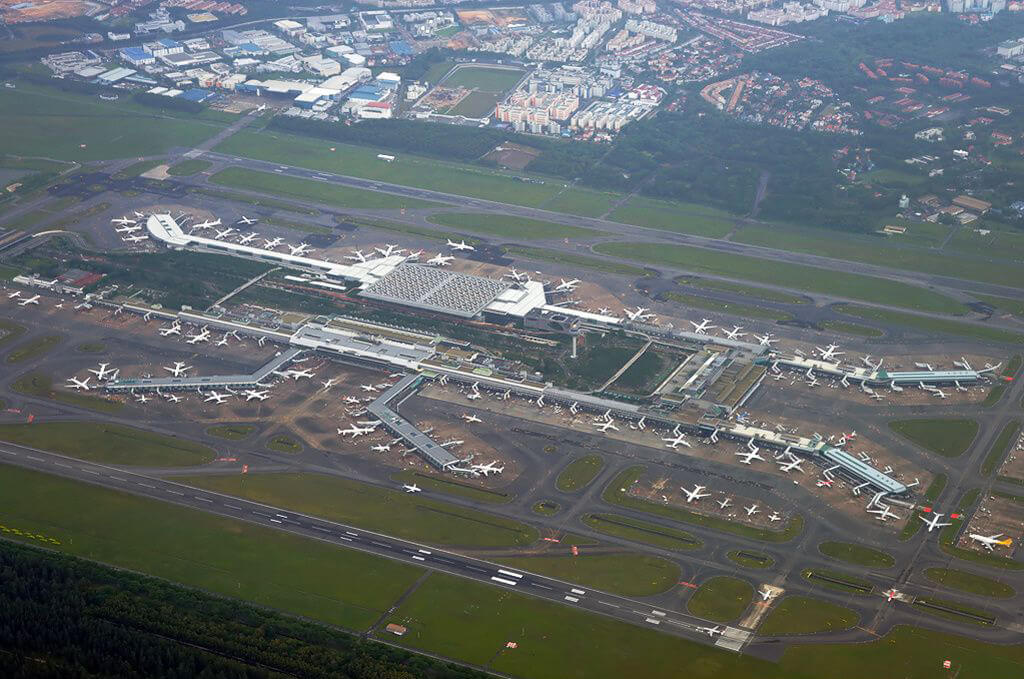
History
- In 1975, the Singapore government decided to build an international airport in Changi. Singapore Changi Airport’s Phase 1 construction project has started. The main contents include reclamation, construction of the first terminal, construction of runways, 45 parking spaces, and an 80-meter-high airport tower.
- On July 1, 1981, Singapore Changi Airport was completed and opened to air traffic; on December 29, Singapore Changi Airport held a navigating ceremony.
- The second phase of Changi Airport’s expansion project has started, and the main contents include the construction of a second terminal, 23 parking bays, a fire station, a cargo aircraft operator building and other facilities.
- On November 22, 1990, Singapore’s Changi Airport Phase 2 expansion project was opened, and the second terminal was opened.
- In 1995, the first renovation project of the T1 terminal of Singapore Changi Airport was opened, which mainly expanded two terminals.
- In 1996, the second renovation project of the T1 terminal of Singapore Changi Airport started. The main content was to build 14 more boarding bridges.
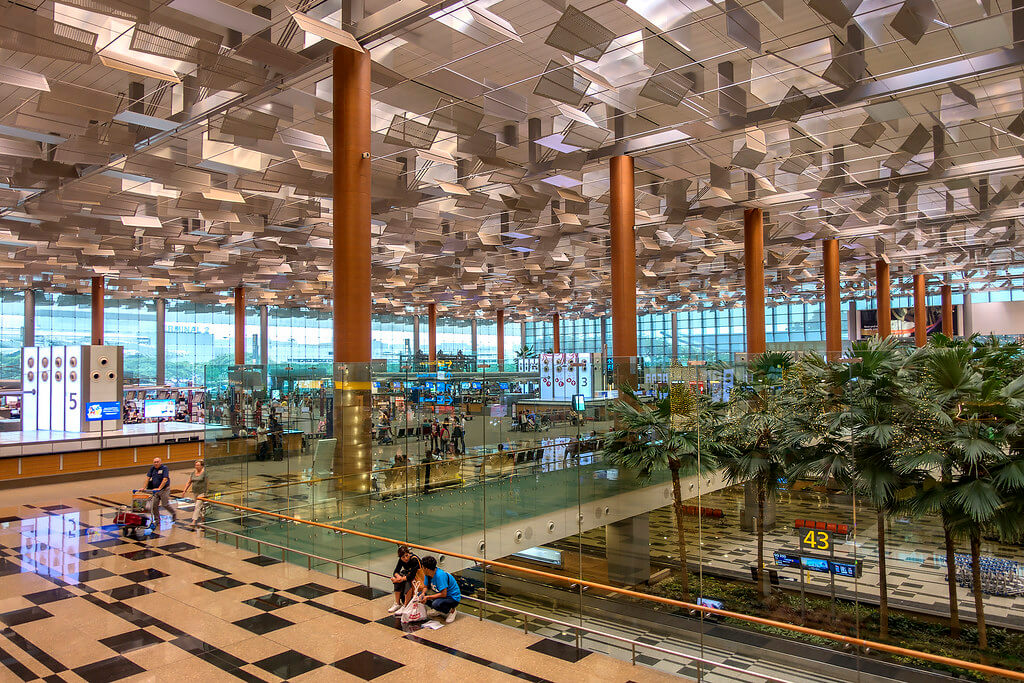
- In 1999, the third renovation project of Terminal 1 of Singapore Changi Airport opened.
- On January 9, 2008, Terminal 3 of Singapore Changi Airport opened; in May, Terminal 1 underwent renovation.
- In 2011, the renovation project of Terminal 1 began.
- On December 5, 2014, construction of Jewel Changi Airport, which cost US$1.7 billion, began. This building opened on April 17, 2019.
- On October 31, 2017, Terminal 4 of Singapore Changi Airport opened.
- In 2018, the passenger throughput of Singapore Changi Airport reached 65.6 million passengers, a record high. The number of aircraft movements was 386,000. 2019 is the 18th busiest international airport in the world.
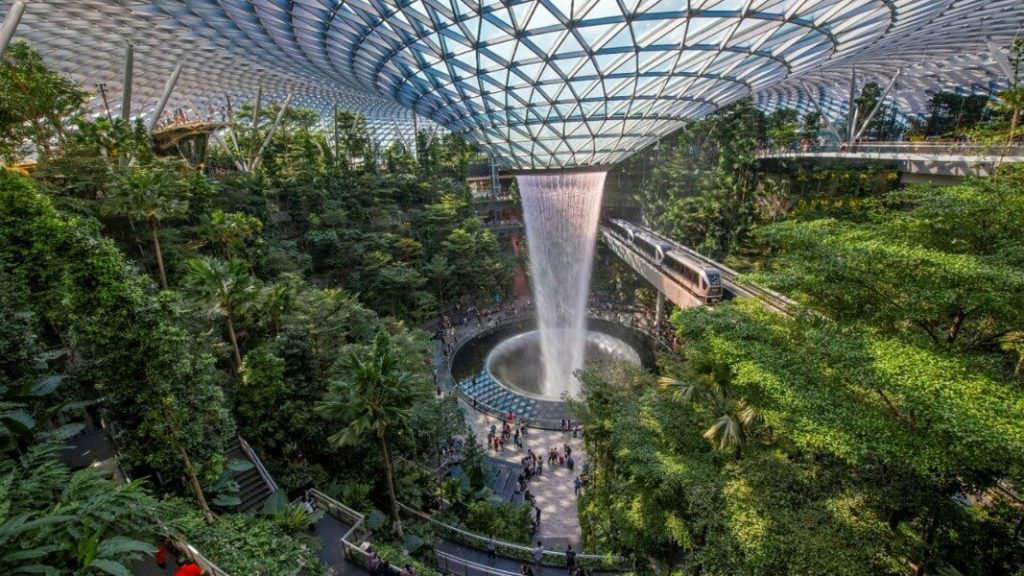
Main building facilities
Singapore Changi Airport has been repeatedly voted as the best airport in the world. It has 4 terminals and transfers between them by sky train and shuttle bus. In addition to carrying flights, the airport also has multiple theme gardens, large duty-free shopping areas, nap areas, and even multiple airport cinemas and 12-meter-high indoor slides.
The four terminals of Changi Airport and the newly opened “Star Changi” have a total of more than 550 retail stores and more than 250 dining outlets, fully satisfying the various needs of passengers.
T1 terminal
Terminal 1 of Singapore Changi Airport adopts H-shaped design, making full use of the limited space to plan the most boarding bridges. As of 2019, the T1 terminal has an area of 280,020 square meters, and the annual passenger volume has increased to 21 million.
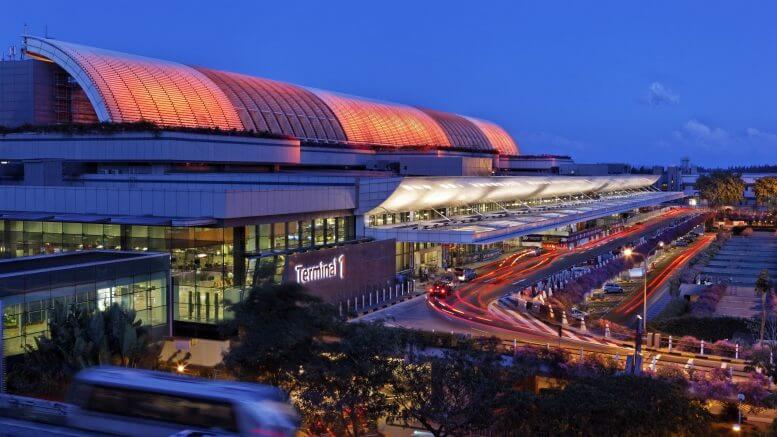
T2 terminal
Terminal T2 of Singapore Changi Airport is located to the south of Terminal T1. Passengers travel between the two terminals via elevated trains.
The T2 terminal building can be divided into 4 parts according to the apron number. The terminal building has a cinema, Burger King and many shops. The decoration in the center of the terminal building is an indoor garden, and the terminal building also has an outdoor roof garden. And the world’s largest plasma display.
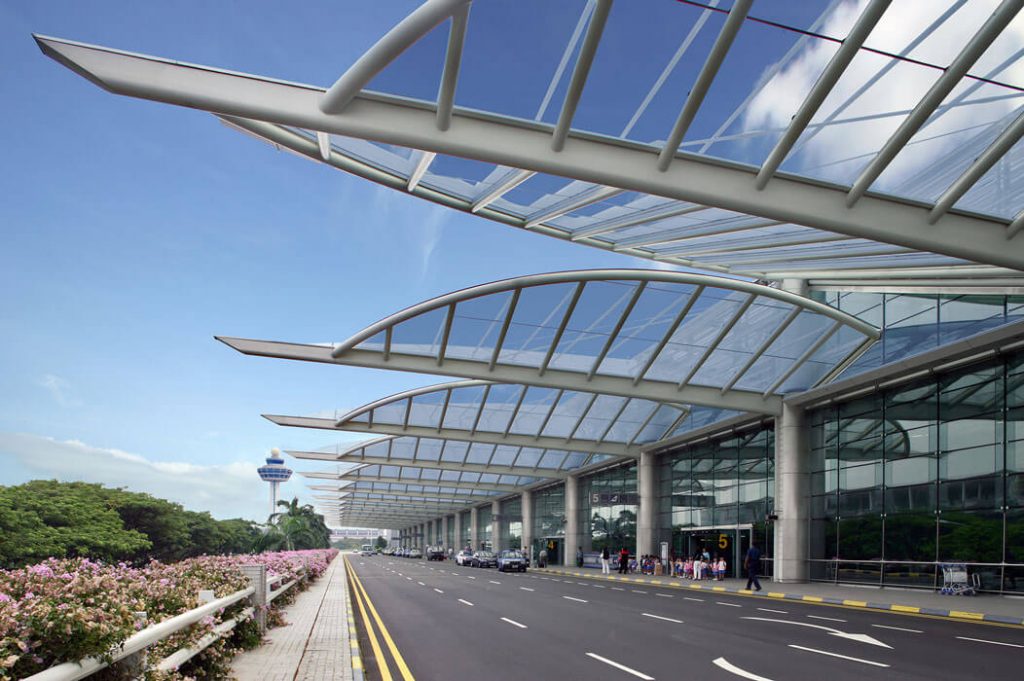
T3 terminal
The T3 terminal was put into operation on January 9, 2008, increasing the airport’s annual handling capacity by 22 million passengers. The terminal has 28 boarding bridges, of which 8 can handle A380.
The main structure of the terminal building is glass. There are 919 skylights on the top, allowing sunlight to directly enter the terminal building; there is a 5-meter-high “green wall” in the terminal building, which has reptiles and waterfalls to create a sense of nature and can also be adjusted Room temperature.
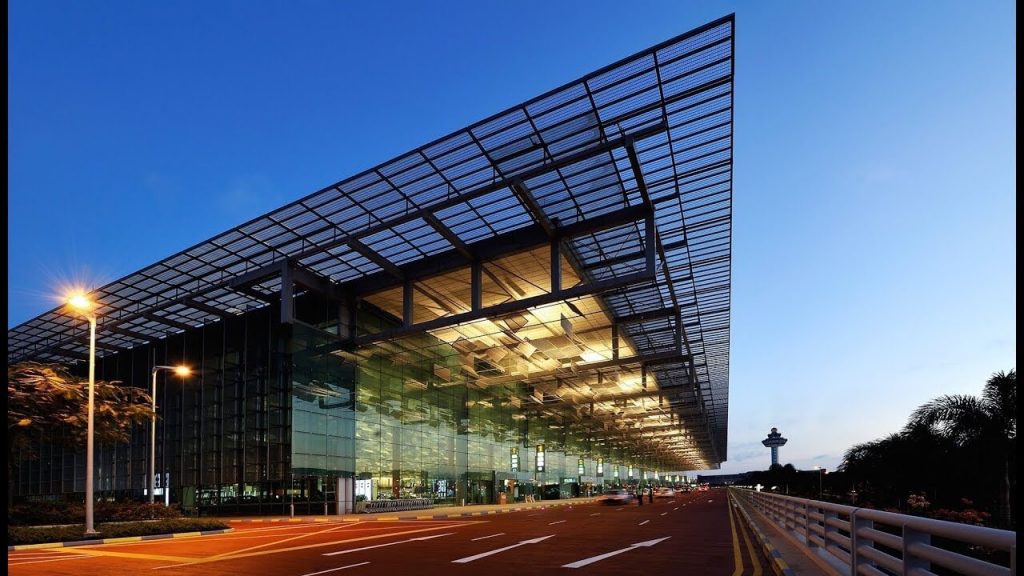
T4 terminal
The T4 terminal is known for its high-tech and futuristic sense. It provides a full set of “Fast Travel” (also known as FAST) procedures, allowing passengers to choose self-service to complete operations at all stages of departure, including check-in, luggage check, Customs clearance and boarding; security check verification will be completed through facial and biometric technology.
At the same time, the T4 terminal is a shopping and gourmet paradise, with more than 80 retail stores and restaurants, bringing passengers a variety of brand choices and a high-quality shopping experience. In addition, the T4 terminal is also the first terminal to be inspired by orchids, with a large dynamic sculpture with the theme of “orchid”.
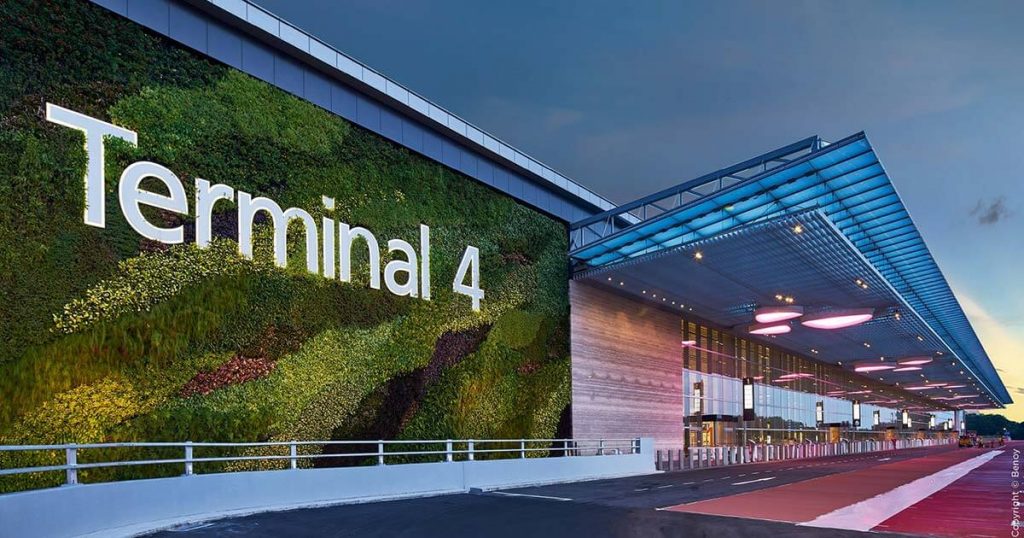
Jewel Changi Airport
Jewel Changi Airport covers an area of 135,700 m² and was designed by the world-renowned architect Moshe Safdie. It features a unique glass roof and steel exterior design. It is a comprehensive complex that integrates airport facilities, landscape gardens, shopping and leisure, hotel dining and other functions. Sex building. It cost 1.7 billion dollars.
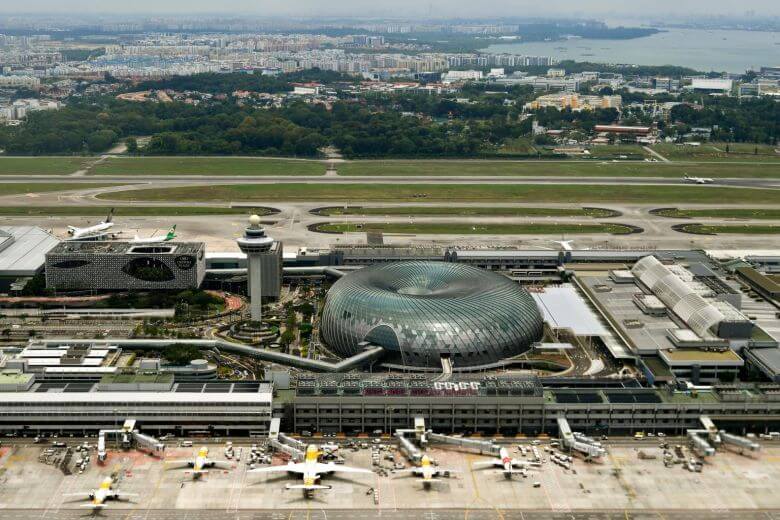
future plan
Passenger Terminal 5 will be ready in the mid-2030s. It is expected to handle 50 million people every year. The structure of the airport terminal is expected to be larger than the sum of terminals 1, 2, and 3. Due to the COVID-19 pandemic, the Changi Terminal 5 project may be delayed for at least 2 years.
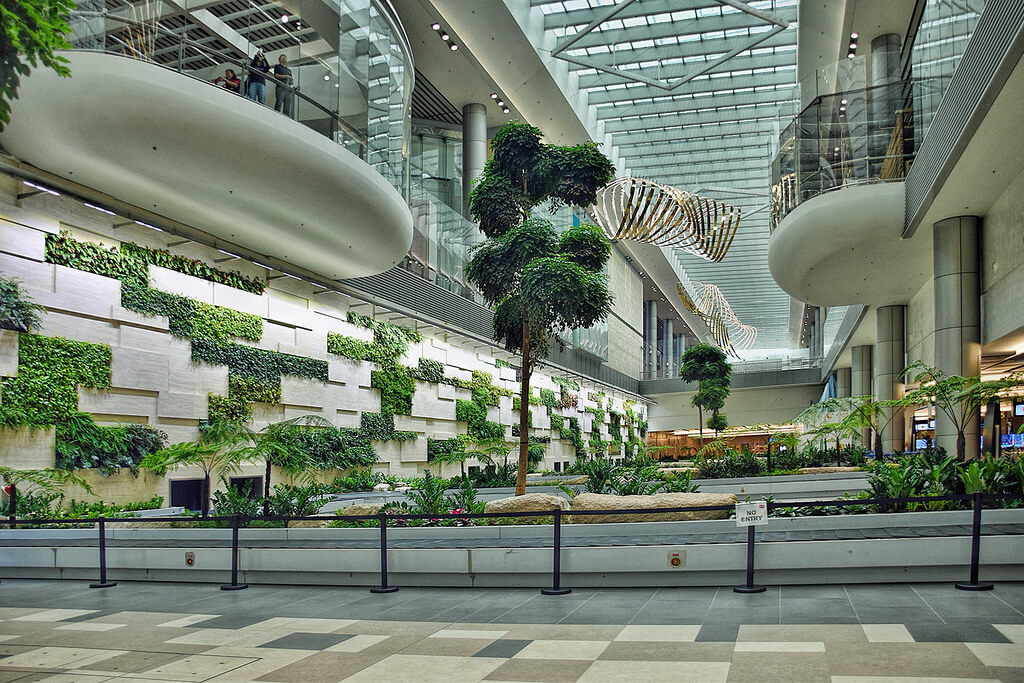
Singapore Changi Airport Data
- Country
- Singapore
- Region
- Southeast Asia
- Status
- In use
- Other name
- Changi Airport
- Location
- Changi, East Region, Singapore
- Owner
- Government of Singapore
- Official website
- changiairport.com
- Operator
- Changi Airport Group (Singapore) Pte Ltd (CAG) Civil Aviation Authority of Singapore (CAAS) Republic of Singapore Air Force (RSAF)
- Began
- 1975
- Opened
- Dec-29, 1981
- Airport type
- Public
- Airport code
- IATA: SINICAO: WSSSWMO: 48698
- Airport area
- 3212 acres / 13 km²
- Runway length
- 3*4,000 m
- Passenger traffic
- 68.3 million(2019)
- Freight volume
- 2,010,000 tons (2019)
- Takeoffs and landings
- 382,000 sorties
View Singapore Changi Airport on Google Satellite Map
Google satellite maps allow you to see building details more clearly, including natural landscapes such as mountains, rivers, deserts, sea and man-made engineering buildings.
If you are very interested in this engineering building, it is a good idea to click below Google Map icon. We will help you jump to the corresponding location of this building or engineering on Google satellite map.
View Singapore Changi Airport on 720yun
720yun is a panoramic image service provider, where you can see the panoramic image of the Engineering Building, let you know more about the Engineering Building.





























































